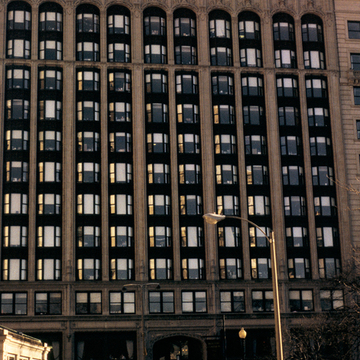Built on the site of the Hotel Pelham (Arthur Gilman, 1857), the first “French flat” apartment building in the United States, the Little Building prided itself on providing a “City under One Roof.” When opened, the tall office building contained six hundred offices, thirteen stores, twenty-two shops, a post office, restaurants, a subway entrance, and passages to the adjoining theaters. This twelve-story steel skyscraper with three light courts inset above the third level on Tremont Street is faced with cast stone in Tudor Revival detailing. Entered from Boylston Street, the double-level arcade is one of the best surviving examples of this urban form in Boston, complete with historic scenes of the city painted below the segmental arches. Emerson College has converted the building for dormitory space, a dining hall, a bookstore, and offices.
You are here
Little Building, Emerson College
If SAH Archipedia has been useful to you, please consider supporting it.
SAH Archipedia tells the story of the United States through its buildings, landscapes, and cities. This freely available resource empowers the public with authoritative knowledge that deepens their understanding and appreciation of the built environment. But the Society of Architectural Historians, which created SAH Archipedia with University of Virginia Press, needs your support to maintain the high-caliber research, writing, photography, cartography, editing, design, and programming that make SAH Archipedia a trusted online resource available to all who value the history of place, heritage tourism, and learning.


